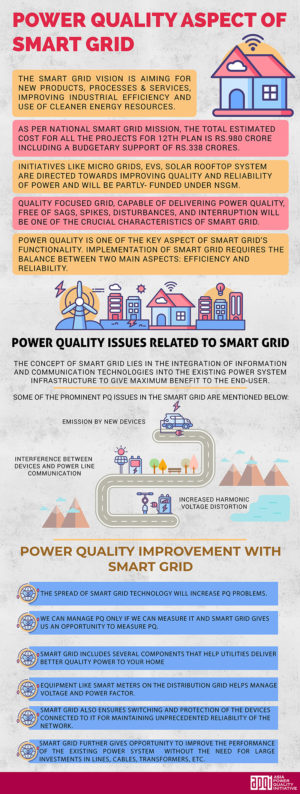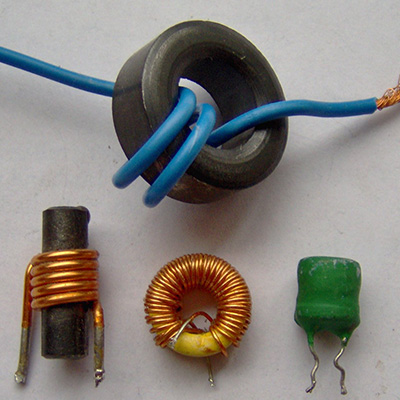Published On: Jan 22, 2018
INTRODUCTION
-
Increased harmonic voltage distortion
With smart grids, the amount of consumption will increase with similar growth in production. This continued growth in both production and consumption could lead to the harmonic voltage distortion becoming unacceptably high. Also, the number of switching actions will keep on increasing and might reach unacceptable values. One may say that production and consumption are in balance at the power-system frequency, but not at harmonic frequencies.
POWER QUALITY IMPROVEMENT WITH SMART GRID
It might be tempting to think with the above-mentioned PQ issues that the spread of smart grid technology will increase PQ problems. But there is other side to the coin! Smart grid technology will help in reducing the PQ challenges. We can manage PQ only if we can measure it and smart grid gives us an opportunity to measure PQ. Smart Grid includes several components that help utilities deliver better quality power to your home. Equipment like smart meters on the distribution grid helps manage voltage and power factor. Smart meters, a key component of smart grid are advanced electric meters that provide both you and your utility with more information about the power delivered to your home. Like other digital devices, they include a transformer to step down the voltage for the digital electronics. They are engineered to meet strict FCC (Federal Communication Commission) requirements to keep from interfering with other electronic or communications equipment.
Smart Grid also ensures switching and protection of the devices connected to it for maintaining unprecedented reliability of the network. But this can be severely impacted due to poor PQ, leading to mal-operation and/or failure of the devices. To cater to this, smart grid provides advanced Distributed Management System (DMS) application like Power Quality analysis.
“Utilities can use Smart Grid technology to optimize the quality of supply for every customer they serve which enables a more efficient and accurate supply of power”
Smart Grid further gives opportunity to improve the performance of the existing power system (or to prevent deterioration) without the need for large investments in lines, cables, transformers, etc. From a customer viewpoint, the improvements can be in terms of reliability, voltage quality or price.
CONCLUSION
In the situation where integrated generation, as well as consumption decreases the quality of power in the smart grid, it is essential to analyse both generation and consumption in a very thorough way. Smart grid gives opportunities to leverage its resources and monitor PQ, improving the quality of supply to end-user. The new technology associated with smart grid offers the opportunity to improve the quality and reliability as experienced by the customers. The smart grid will be at the heart of tomorrow’s connected world underlining the ‘Quality’ of life for each one of us. Thus, Power Quality is and will be an important aspect of smart grid for its efficient operation that needs attention from the industry. It concludes that higher the quality of power, more efficient will be the Smart Grid.
REFERENCES
- Power Quality Aspects of Smart Grid – by Math H.J. Bollen
- Smart Grid and Power Quality
- ‘Power Quality Requirements for the Smart Grid Design’– by Aleksandar Janjic, Zoran Stajic, Ivan Radovic
- ‘Smart Grids: Importance of Power Quality’ by Vivek Agarwal, Lefteri H. Tsoukalas
- Power Quality: A Growing Concern by Andrew Sagl
- Smart Grid and Quality of Supply








